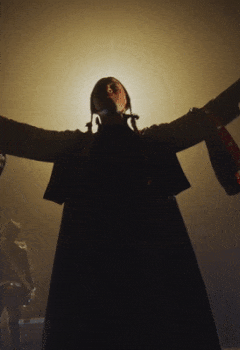



‘An Ancient Observer’ is probably the most subtle yet straightforward thing you’ve ever composed. Was it your conscious approach?
For me, the idea is to make complicated music sound simple. Even though my works sound easy, ‘cause they’re melodic, if you get into — there are complicated things underneath. They’re just presented in a way that’s easier to comprehend.




On the album, there’s a track called ‘Fides Tua’, which means ‘Your faith’. What place does faith have in your life?
This song is dedicated to my uncle who passed away early in 2012. He influenced me so much I can’t even describe it. He played a lot of jazz to me when I was a little kid, like, 3 or 4 years old, and he told me: ‘You know, one day you’re gonna meet Herbie Hancock, Chick Correa, all these people and you’re gonna play with them’. It was just talking, but then it actually happened. For me, seeing how much my uncle believed in me was crazy and very important. This is the faith that drives me. I wrote ‘Fides Tua’ three or four days after his death.
For me, the idea is to make complicated music sound simple

Do you think of an ancient observer as a higher power that looks down upon us?
The ancient observer is actually us. It’s about the art of observing, realizing what is eternal and what is passing. For example, when I look out of the window at my current home in Yerevan, I have a view of Mount Ararat. Every morning, I wake up and see this thing that has been around for millions of years. But the picture of a landscape with trees and birds is cut by airplane trails, satellite dishes, electrical wires. For me, it’s an existential awakening type of feeling. It’s like you’re looking at time. Like a time warp in which you feel alive. This beautiful feeling inspired me to write new pieces and became a theme of the album.
Whoever lived in that region five thousand years ago, they observed the same sky, same mountain. It’s amazing to be able to observe it now in a way cinematographers, photographers, painters do. Musical observation is the same.
I assume this existential feeling is also caused by your previous project ‘Luys I Luso’ where you reworked Armenian sacred music of the 5th century, right?
Absolutely. It was very important for me as a musician and as a human being because it’s something I’ve been meaning to work on for a very long time, more than ten years, but I didn’t have the courage to touch this subject. ‘Cause with religious music, you have to really deeply understand what you’re doing. I was afraid of it, felt like I had no right to touch it ‘cause I’m not really really religious. But music helped me to get into faith; it’s like a tool, a vehicle on the way to God.




As far as you needing the choir that can sing like priests but also is very into modern, classical music, how many tries did you make to find the right one?
Someone just recommended this choir and I chose them right away, ‘cause they already were into religious music in general. But it was just the beginning, I knew I had to work with them for a long time before we’d understand each other.
There’s no polyphony in Armenian folk and religious music, just drones and microtones. But then Caucasus got influenced by classical music and then the Soviet Union came and everything became a little bit squared, like, let’s pretend there are no microtones at all. So, the hardest part for me was to bring the choir back to the roots, to convince them that it’s really nice that you’re singing Armenian religious music with Wagner harmonies and a 19th century feeling; it’s a beautiful thing, but before Ekmalyan arrangements there were at least 14 more centuries when this music was sung in a completely different way. I did a lot of my own research.
Music is beautiful, but music itself is never enough
You put so much energy into composing and performing music — what’s your way of refilling those inner sources?
Lots of poetry, cinematography, visual arts of any kind. Everything that has soul. ‘Cause music is beautiful, but music itself is never enough. Visiting monasteries also helps, in Armenia and elsewhere, for example today I went to Kyiv Pechersk Lavra and was still overwhelmed – such a powerful place.
Photos by Julia Weber
share with friends

